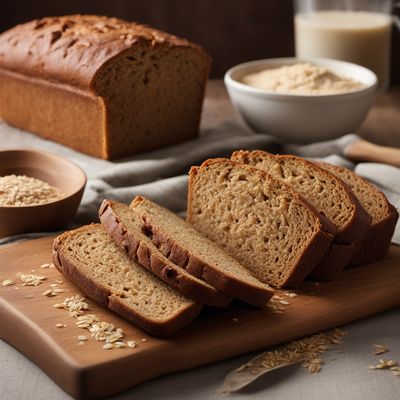
Ingredient
Wheat germ
The Nutritional Powerhouse: Wheat Germ
Wheat germ is the nutrient-rich embryo of the wheat kernel, which is separated during the milling process. It has a golden color and a slightly sweet, nutty taste. With its delicate texture and high oil content, wheat germ adds a pleasant crunch and richness to various recipes. It is a great source of fiber, protein, healthy fats, and important nutrients like vitamin E, folate, and magnesium.
Origins and history
Wheat has been cultivated for thousands of years, and wheat germ has been valued for its nutritional benefits since ancient times. It has been a staple ingredient in many cultures, including ancient Egyptians and Greeks. Today, it is widely used in baking, cooking, and as a nutritional supplement.
Nutritional information
Wheat germ is a nutritional powerhouse, providing a good amount of fiber, protein, healthy fats, and essential vitamins and minerals. It is particularly rich in vitamin E, which acts as a powerful antioxidant in the body.
Allergens
Contains gluten.
How to select
When selecting wheat germ, look for a product that is fresh, with a pleasant aroma and a golden color. Check the expiration date to ensure its freshness. Opt for organic and non-GMO varieties if available.
Storage recommendations
To maintain the freshness and quality of wheat germ, store it in an airtight container in a cool, dark place, such as a pantry or refrigerator. This will help prevent oxidation and preserve its nutritional value for longer periods.
How to produce
Wheat germ can be produced by growing wheat plants and harvesting the wheat kernels. The germ is then separated from the rest of the kernel through the milling process. It can also be purchased as a standalone product from grocery stores or online retailers.
Preparation tips
Wheat germ can be used in a variety of ways, such as sprinkling it over yogurt, oatmeal, or smoothies for added crunch and nutrition. It can also be incorporated into baked goods like bread, muffins, and cookies to enhance their flavor and nutritional content. Toasting wheat germ before use can intensify its nutty taste.
Culinary uses
Wheat germ is commonly used in baking recipes, such as bread, muffins, and cookies, to add a nutty flavor and boost the nutritional value. It can also be used as a topping for cereals, salads, and desserts.
Availability
Wheat germ is widely available in grocery stores, health food stores, and online retailers worldwide.

